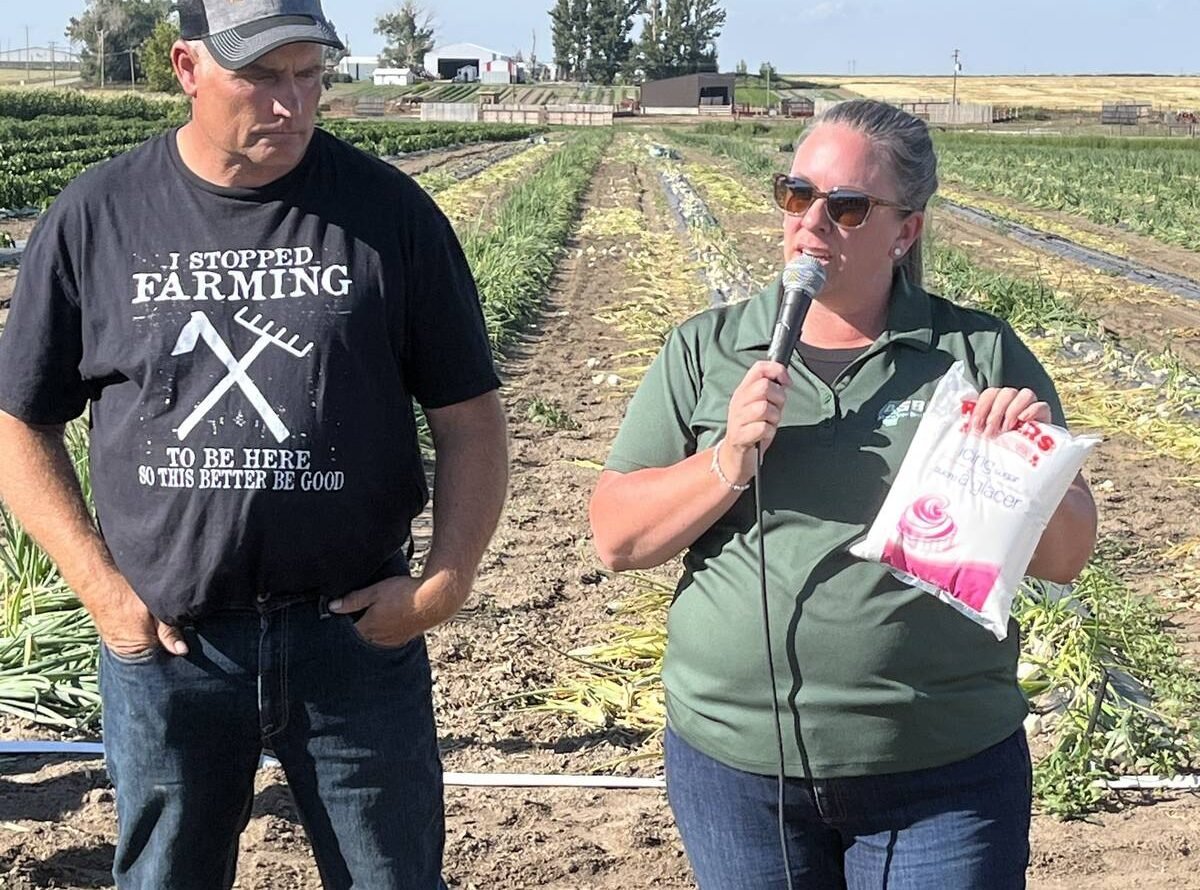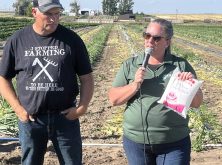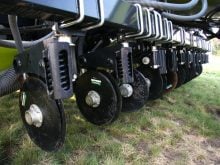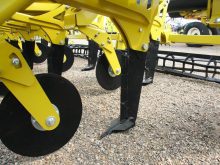Ivan Ottenbreit climbed to the top of a 30 foot high grain bin on a cold December day, opened the lid and warmed his hands in the air that rushed out.
“Heat was coming out the top of that tube like you wouldn’t believe,” said Ottenbreit, who farms near Grayson, Sask.
“It had been a miserable wet fall for us (in 2009) and I ran out of room because the canola was running really well. So we put up a 7,000 (bushel) and an 8,000 (bu. bin). And we put the Grainair Tubes in both new bins.”
Read Also

Alberta’s beets a sweet domestic segment in Canada’s sugar supply
The sugar beet industry is showcased during a Farm to Table tour, as Taber features the last remaining sugar beet processing plant in all of Canada.
Ottenbreit loaded the 8,000 bu. bin with 13 percent canola and flax in the 7,000 bu. bin.
He said he has OPI temp cables in all bins and checks them often.
The OPI cables told him the two new bins were cooling nicely from the bottom, as they should. The heat was moving upward in the bins. He positioned the cables about three feet from the Grainair Tubes. The cables have a temperature sensor located every metre.
“The canola started at about 15 to 20 C at the bottom. I had the lid propped up with a four by four, which seemed to be OK.
“Then it got cold for two weeks in December. I went out and looked at the readings. Whoa. Now it was 25 C in the middle.”
Ottenbreit decided to circulate some of the canola with a truck, but he knew grain never circulates properly that way in the winter. After only 1,200 bu., the confetti he put in the top was showing up in the auger.
“On a Thursday to a Sunday, it went from 25 to 35 in the middle. Dead centre in the middle. Number three out of seven monitoring points. So I panicked.
“Luckily my neighbour had an aeration bin that was free, so we augered it out and brought it over there. We could smell the last load, the grain from the top. If it hadn’t been for the (Grainair) Tubes, the whole damn bin would have heated and spoiled.”
Ottenbreit said the OPI sensors told him there was a pocket in the middle but not that the lid was iced shut.
In retrospect, he feels a four by four propped under the lid is not a good insurance policy on 8,000 bu. of canola. At the least, he said, the lid should be wide open when the Grainair system is used.
The 7,000 bu. flax bin experienced a similar problem, but he was able to open the lid before damage was done. He chipped out 100 pounds of ice in both bins from the area just below the lid.
“To me, this proves the grain tubes are working and doing what they’re supposed to do,” he said.
“The problem now is to figure out how to get all that heat and moisture out the top of the bins immediately.
“The idea of a whirlybird on the lid should do it, but I think we need some research into this because it works so well.”















